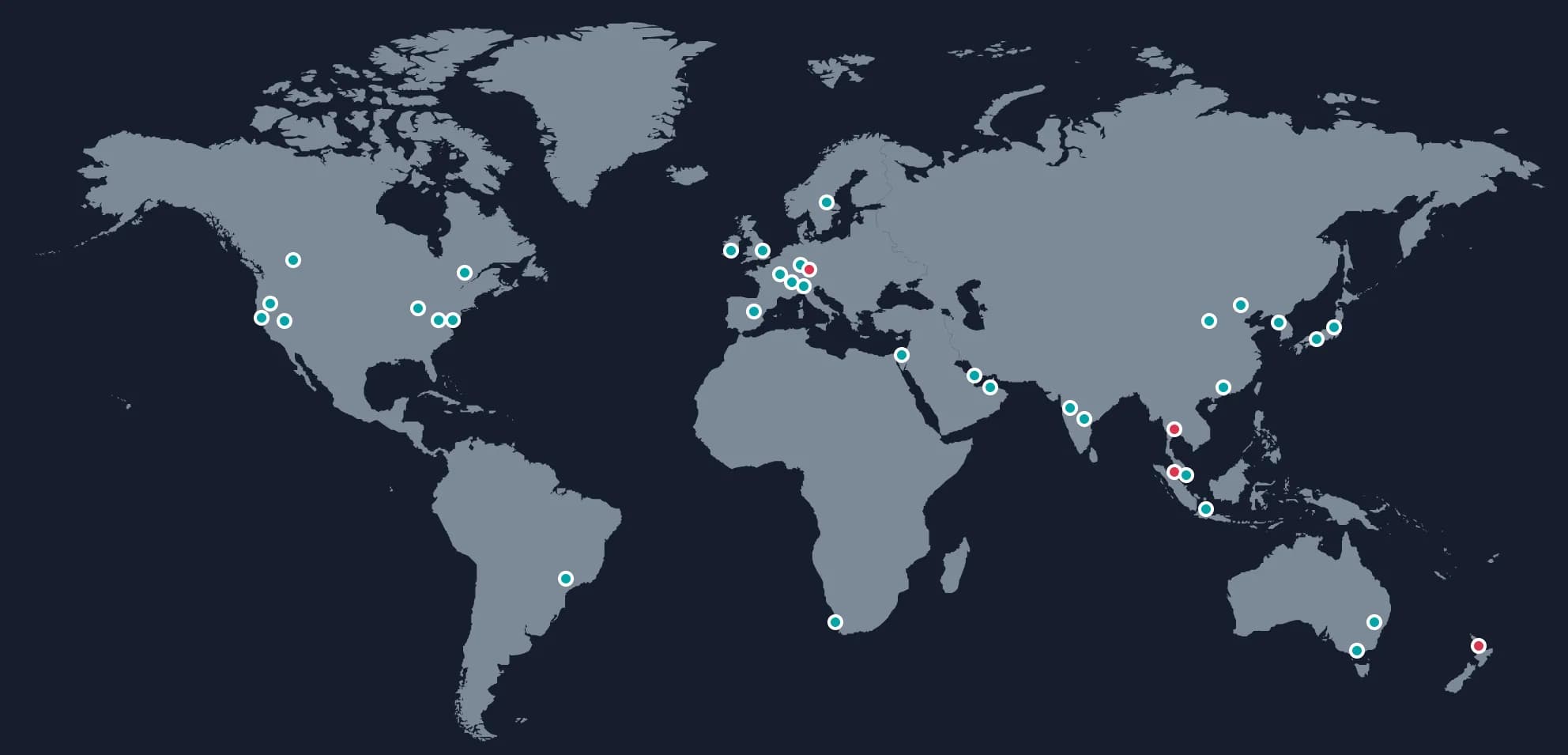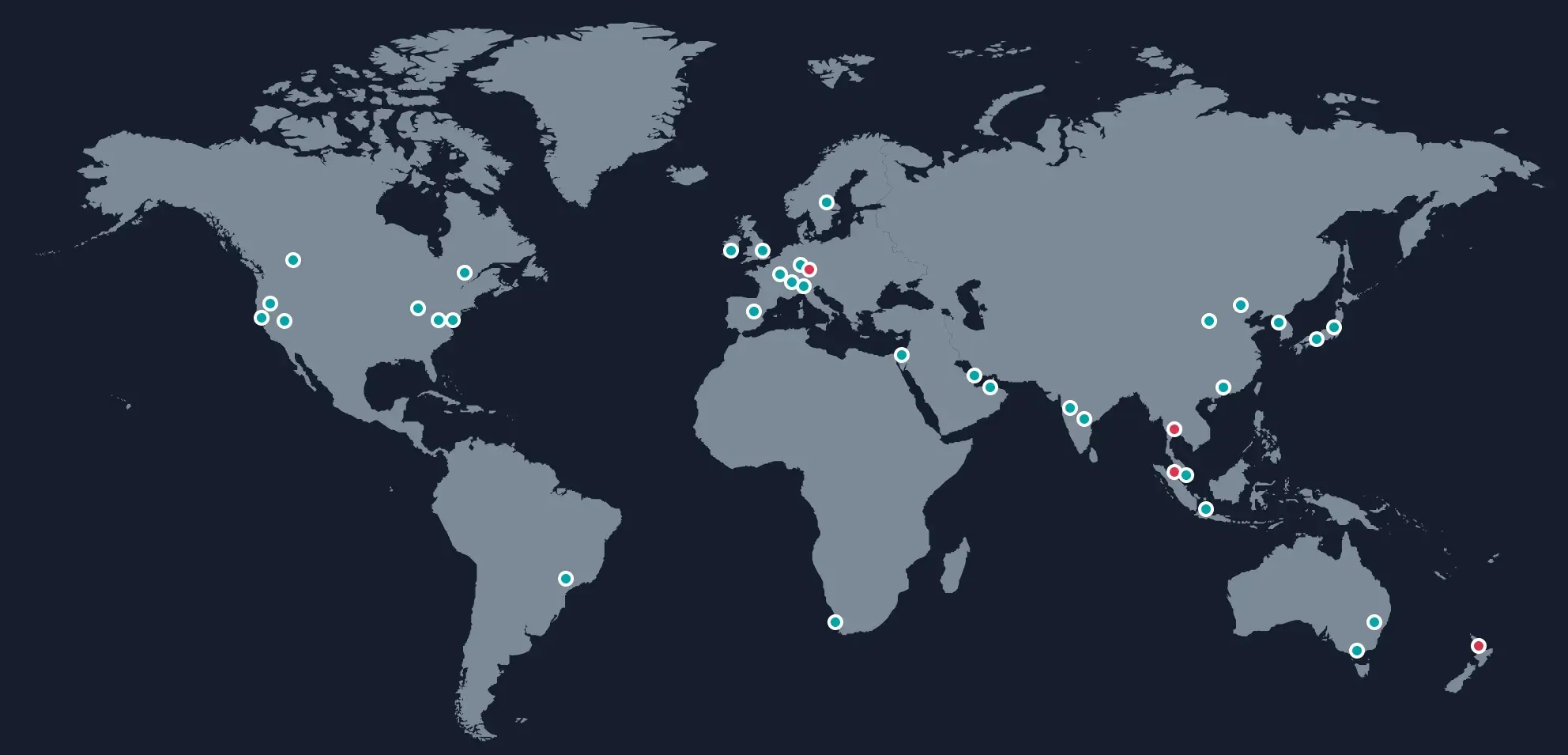Multi-Region Architectures in AWS: an Introduction
An introduction to multi-region architectures in AWS, covering the significance, basics, case studies, best practices, and real-world applications. It covers the why and the how, illustrated with real-life scenarios, and guiding through best practices.

6 min read
Welcome to the exciting world of multi-region architectures in AWS! In this initial article, we’ll delve into the essential concepts of AWS regions and Availability Zones, uncovering how they serve as the backbone of a resilient, efficient, and compliant cloud environment.
Together, we will navigate the strategic considerations of implementing multi-region architectures and provide a first-hand look at how these deployments operate. With a focus on high-level infrastructure and architectural ideas, we will address business problems and their solutions and establish best practices for your journey in multi-region AWS deployments.
Understanding the Basics
Before we delve into the intricacies of multi-region architectures, it’s crucial to understand the foundational elements of AWS’s global infrastructure—Regions, Availability Zones, and Local Zones. These building blocks provide the framework for deploying scalable, reliable, and secure applications.
What are AWS Regions, Availability Zones, and Local Zones?
AWS Regions are geographically distinct locations worldwide where AWS hosts its cloud infrastructure. Each region is a separate geographic area with multiple isolated locations known as Availability Zones.
Availability Zones (AZs) are data centers within a region designed to offer high availability, fault tolerance, and scalability. They are interconnected through low-latency links but are physically separated and located in different floodplains or seismic zones to minimize the risk of a single event impacting both zones. This isolation ensures that an incident in one AZ does not affect the others, thus supporting robust disaster recovery plans. For example, the US East (N. Virginia) region has six Availability Zones, while the Asia Pacific (Mumbai) region has three.
Local Zones are a newer addition to AWS’s infrastructure. They place computing, storage, database, and other select services closer to end-users. Local Zones enable you to run latency-sensitive applications nearer to your users, minimizing latency and improving performance for a better user experience.
INFO
Local Zones are tied to a specific parent region and are designed to complement the services available in the parent region, but this does not have to be the closest region. For example, the Los Angeles Local Zone is associated with the US West (Oregon) region and not with the US West (Northern California) region.
Snapshot of AWS’s global infrastructure
As of the day of writing this article, AWS has 33 regions and 105 Availability Zones worldwide, with plans for further expansion. This global footprint allows you to deploy applications closer to your end users, comply with data residency requirements, and build resilient, fault-tolerant architectures. 
TIP
You can check the up-to-date list and map of all available locations across the world on the
AWS Global Infrastructure
page.
The Case for Multi-Region Architectures
Even though multi-region architectures sometimes have a terrible reputation as complex and costly, they are essential for ensuring business continuity, disaster recovery, and compliance with data residency regulations. The increasing frequency of natural disasters, data center outages, and cyber attacks that can disrupt services and cause data loss underscore the need for a solid multi-region strategy. The recent OVH Data Center fire in Strasbourg, France, is a prime example of how a single-region deployment can lead to catastrophic data loss and service disruption.
 OVH Data Center Fire in Strasbourg, France, March 2021. Picture eeNews Europe
OVH Data Center Fire in Strasbourg, France, March 2021. Picture eeNews Europe
Disaster Recovery and Business Continuity Essentials
The real business need here is maintaining continuous operation, minimizing disruption during unforeseen events, and solidifying trust with stakeholders and customers.
In the event of a major incident affecting an entire AWS region (such as natural disasters, power outages, or network disruptions), having a multi-region architecture ensures your application remains available.
The Recovery Time Objective (RTO) and Recovery Point Objective (RPO) are critical metrics in disaster recovery planning. RTO refers to the target time you set for the recovery of your IT and business activities after a disaster has struck, and RPO is the maximum tolerable period in which you could lose data from an IT service due to a significant incident. By having resources and backups in multiple regions, you can achieve a lower RTO and RPO, minimizing potential loss and downtime.
Improved Performance and User Experience across Geographies
The real business need is to provide fast and responsive service to customers regardless of location, directly contributing to customer satisfaction and retention.
Businesses can improve performance significantly by serving content from the nearest region when they expand globally or target customers in diverse geographic locations.
By deploying services in regions closer to your end users, you can significantly reduce latency, leading to faster application load times. It is crucial in global companies where users might be physically in the antipodes of the world.
Regulatory Compliance and Multi-Region Data Replication
The business need here is two-fold: to legally operate in multiple jurisdictions by complying with local laws and regulations and to avoid the potentially substantial fines and reputational damage that could come from non-compliance.
Different countries have various regulations governing the storage and processing of data. For example, the General Data Protection Regulation (GDPR) requires that the personal data of EU citizens be processed and stored within the EU (in most cases).
A multi-region architecture can assist with meeting such compliance requirements by strategically placing IT resources in regions that align with regulatory demands.
Challenges and Complexity of Multi-Region Deployments
Increased Complexity
Designing a multi-region architecture is more complex than a traditional single-region setup. It involves carefully planning network design, replication mechanisms, and consistent deployment processes.
It also sometimes requires rearchitecting applications to ensure they can operate across regions, handle data consistency, and manage failover scenarios.
And we must remember the operational overhead of managing resources across multiple regions, including monitoring, incident response, and security management.
Cost Management
Implementing a multi-region infrastructure can incur higher costs due to increased data transfer rates, replication mechanisms, and the necessity of deploying redundant systems across locations.
It depends on the specific use case and the required redundancy level, but managing costs and optimizing resource usage across regions is essential.
Data Consistency
Synchronizing data across regions to ensure consistency is a non-trivial technical challenge. You must balance strategies like eventual consistency with application requirements for strong consistency or real-time data accessibility.
You have to change your mindset from a “single source of truth” to “eventual consistency” and design your applications accordingly where possible.
You might have to rely on services like Amazon Aurora Global Database or even build custom solutions if you need strong consistency.
Do you want to learn how to build multi-region on AWS?
Check out the following articles in this series, where we’ll dive deep into the technical depth of multi-region patterns and services. We’ll explore the AWS services enabling multi-region deployments, discuss inter-region latency and data replication techniques, and examine real-world examples.
